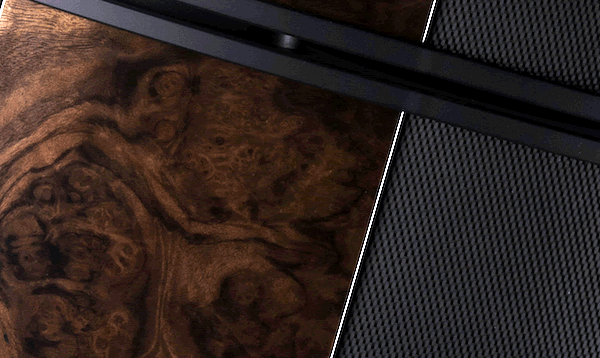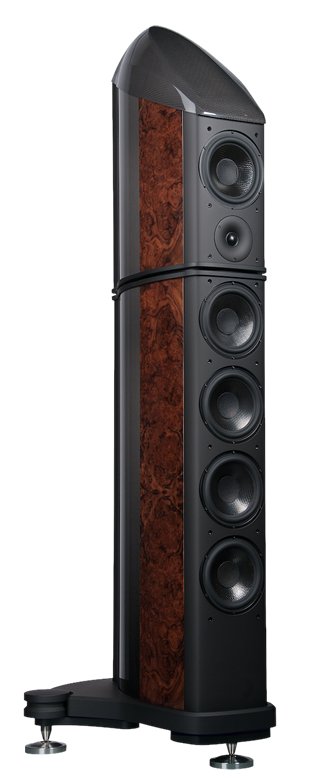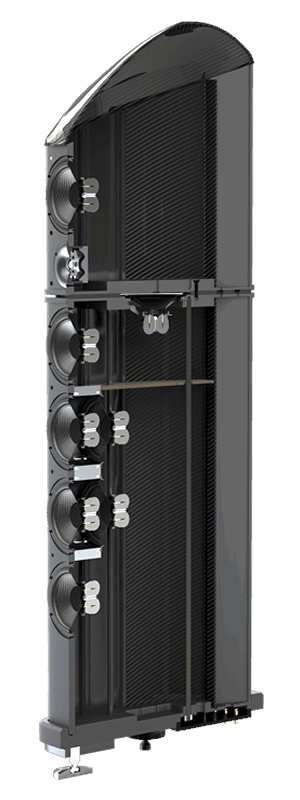

Wilson Benesch Cardinal
The Wilson Benesch Cardinal loudspeaker, is the company's flagship loudspeaker. It epitomizes all of Wilson Benesch's loudspeaker design such as maximizing internal air volume, optimal mechanical driver frequency range envelope to eliminate/minimize cross-over electrical signal degradation, and manufacturing expertise and fabrication with specifically developed materials with ideal acoustical properties. Wilson Benesch tackles the requirements for faithful reproduction of electrical signal into acoustical power with brilliant engineering in the same way racing car companies extract the maximum power and control performance from their highly engineered cars. It is for good reason that advanced materials like carbon fiber composites and nine drivers are used (three are hidden).
Real Loudspeaker Engineering
Wilson Benesch has collaborated with UK government organizations and universities for several key technological material advancements. These include resin transfer mould technology in 1999 (along with Lotus cars and two UK Ministry of Defense organizations), and tactic drive design using Isotactic Polypropylene, a unique cone material invented by professor Ward of Leeds university. The latest refinements of these innovations are incorporated in the Cardinal loudspeaker.
With over 20 years of experience, Wilson Benesch understands how carbon fiber composite technology is the best way to direct and damp energy in cabinets so they do not store and delay release energy that gives speakers a boxy sound and smears detail. You want to hear the music not the loudspeaker cabinet. It perhaps makes sense that low mass structures are easier to damp than high mass ones - you will hear and feel the passing of a freight train even at some distance -whereas it would be hard to imagine a balsa wood model making any noise at all. The idea then that big thick wooden cabinets or monstrous turntables somehow eliminate "noise" is false - it is simply moved to a lower frequency. Cabinets put out considerable sound themselves; if a cabinet is 100x larger than a diaphragm it only has to move 100th of the distance of the diaphragm for the same acoustical output. For a given external surface area, internal air volume is lost from thick cabinet walls (3" or more thick in some cases) and from internal bracing and the extra mass is hard to stop vibrating once it is excited.
Wilson Benesch A.C.T cabinets are stiff light monocoques with minimal internal bracing. The impressive cabinet system of the Wilson Benesch Cardinal Loudspeaker is a supported by a massive engineered high grade aluminum alloy base that requires hundreds of thousands of lines of "G" codes (that controls computer driven CNC milling machines) for all the complex 3D geometry and subtle curves cut from what is initially an 88 Kg slab.
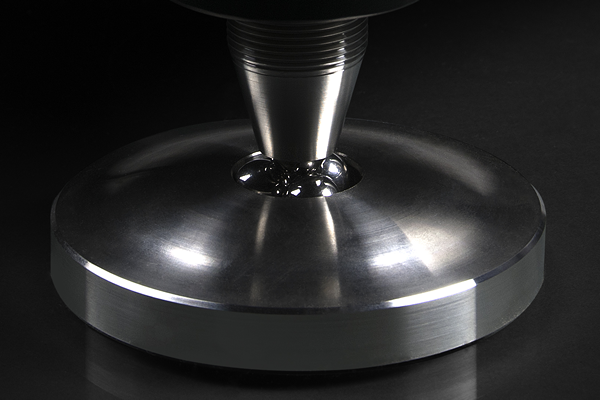
Kinematic Location System
The load is distributed over three 28mm threads which do not terminate in a spike but is reduced to single 12.5mm steel ball that sits on three 12.5mm steel balls held captive in a location disc (floor coaster). Through this kinematic system, virtually tons of pressure is located down to 1 square mm of surface area!
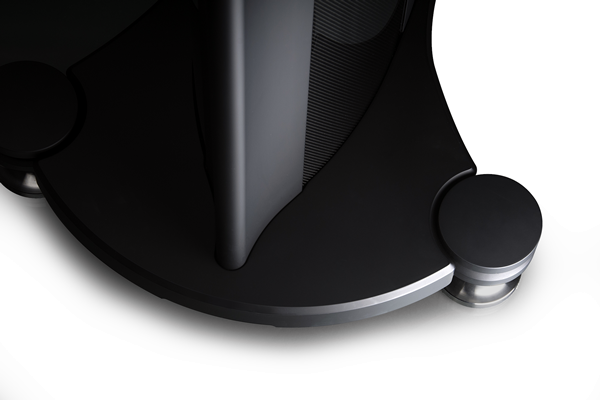
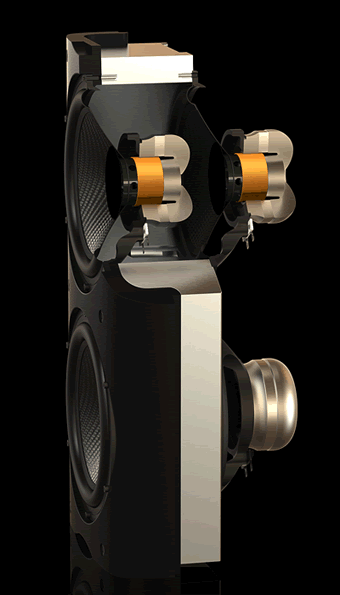
Isobaric Bass
Wilson Benesch has used the Isobaric principle in its Discovery and Chimera loudspeaker designs. Two drivers are linked via a small airspace. The internal, unseen driver, manages all the air movement and spring effect inside the cabinet but the external driver sees a single pressure, the same as free space, and has no spring effect. This lowers the resonant frequency of the external driver without adding mass or introducing sluggish step response and recovery. This solution avoids the need for large difficult to control diaphragms which would require a large hole in the cabinet through which the internal sounds of the cabinet would be heard. A large driver would be easier and cheaper but offer a sluggish and colored response and compromise the goal of minimal eternal surface area for the lowest signal to noise ratio. One simple air core inductor rolling off at 500Hz is used with each Isobaric composite driver unit system.
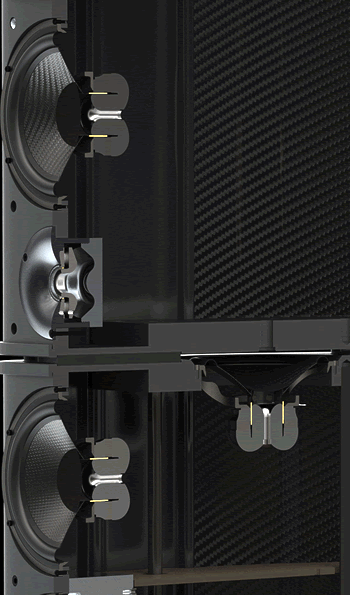
Troika Midrange Alignment
The Troika concept in the Cardinal speaker is more sophisticated than the familiar D'Appolito configuration because of its underlying complex cabinet architecture and electro mechanical filter design. The midrange drivers above and below the tweeter are both in sealed chambers but exposed to different air volumes; one driver covers the upper bass and lower midrange while the other covers the upper mid range. Both of these drivers are driven directly by the amplifier - there is no filter at all. There is a third semi-active ABR driver between the upper and lower cabinets which has a short coil to provide linear electro mechanical damping especially when the system is driven harder. Thus the sensitive midrange is handled by three drivers with superb transient response from a near perfect step response, and dynamics free from hangover created from cross-over coil hysteresis or capacitive discharge.
Semisphere Tweeter
The tweeter coil is located at the acoustical center and time aligned to the midrange drivers. Compared to many tweeters, which behind a face plate are little bigger than a dollar coin, the semi-sphere has a massive heat absorbing rear end cap and powerful magnets in an optimized vented housing. Together with a low mass diaphragm, linear power response extends to beyond 35 KHz. One first order cross-over rolls the tweeter off at 5 KHz.
The Wilson Benesch design and manufacturing expertise come together in the Cardinal Loudspeaker that really represents a state of the art approach to sound reproduction in the home. As the reviews come in comments about the ability to differentiate source material, musical tonality, timing, and presence, seamless integrated sound, control and quality over quantity reflect how well Wilson Benesch have brought to the market place a speaker that objectively and subjectively meets real sound reproduction requirements. The cost is entirely appropriate for a nine driver technological tour de force. Wilson Benesch Cardinal loudspeakers come standard with a British aerospace quality silk black finish, or real wood veneers applied by Bentley trained craftsmen, or architectural grade polymer color finishes and are hand-built to order with a delivery time of approximately 10-12 weeks.
U.S Retail Price: $115,000 (standard finish)
Wilson Benesch is located in Sheffield England - the traditional home of steel engineering in the UK - and is the only U.K. audio company to have won substantial government funding for its innovative development work.
